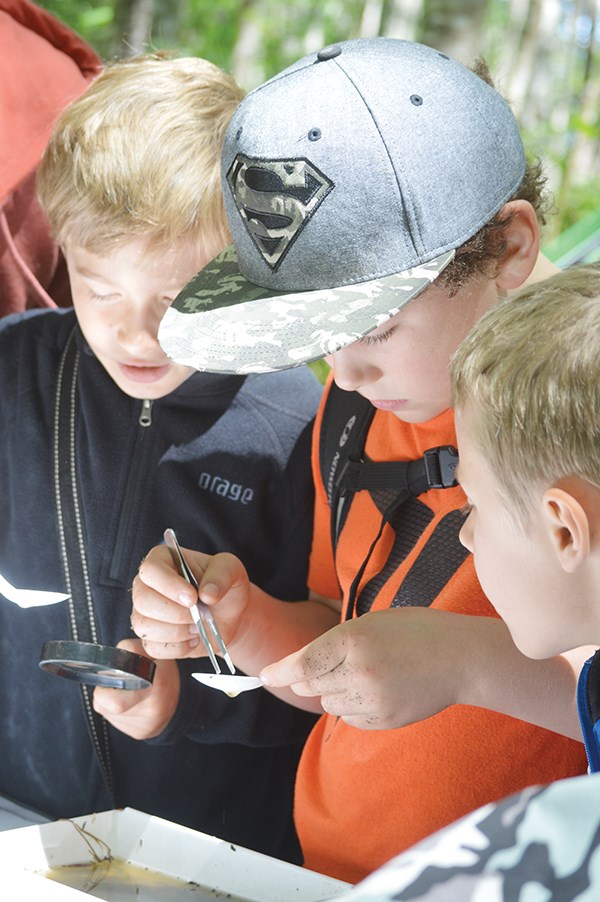Some local elementary students are getting a chance to poke around in pond water to learn about life in Squamish.
For two weeks, the �鶹�����Watershed Society has been running its annual “field day” education program for kids, which runs through May 12. For a couple of hours on each visit, the students break into smaller groups to learn about the local watershed and its surrounding environment.
This year, the site was the woods along Logger’s Lane near the �鶹�����Adventure Centre. Other sites in recent years have included the �鶹�����Estuary and Mamquam River.
According to �鶹�����Watershed Society education coordinator Rhonda O’Grady, the organization puts on the program in areas of �鶹�����where it has done restoration work. “It’s sort of promoting living classrooms outdoors,” she said.
The project includes all the public schools in �鶹�����as well as the �鶹�����Montessori School. Over the two weeks, it will have had about 600 children between Grade 1 and 6 visit the site.
The students have been doing class work on their own to look at the environment and what lives in the surrounding area, but the outreach program gives them the chance to learn more from some well informed guides.
“It’s a wonderful program,” Montessori teacher Catrin Webb said. “The volunteers are amazing.”
For the field day program, the volunteers from the �鶹�����Watershed Society set up four stations, “all based on what’s in that area,” O’Grady said.
At one station, the kids get to look more closely at the life forms present in a small scoop of pond water from the area wetlands. When someone spots a young salamander, the other children move in for a closer look.
The idea is to look at the ephemeral wetlands and how fragile the area is – in other words, to get children thinking about how a small amount of water is “more than just a puddle.”
At another station, they play “It’s not easy being green,” a frog game – a variation of tag where some kids play frogs and the others, who are “it,” represent threats to frogs and their habitat.
There is one station where half the children wear blindfolds and, with the help of friend as guides, try to identify a particular tree by using their other senses.
Another, “Into the woods,” looks at the woods, themselves, and the connections between humans and the ecosystem.
Beyond the stations, the trails provide other learning opportunities, such as the presence of claw marks on a tree that point to a bear’s visit, or the links between water levels in a creek and the tides in Howe Sound.
The schools get resources before the visit as well as after, so classes can continue to explore what life is in their backyard.
“The teachers are getting a sample of biodiversity and what’s here in Squamish,” O’Grady said.
Ultimately, the idea, she says, is to pose questions to the children to get them thinking about where they live and how issues like development can affect their environment.
“Depending on the age group, we really have to adapt,” she said. “We try to base the level of the program on the questions the kids are asking us.”




